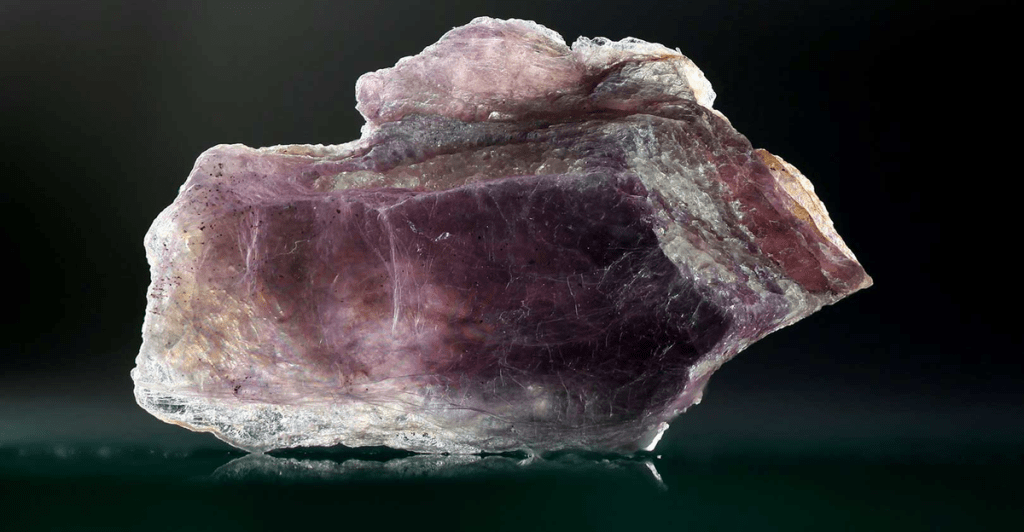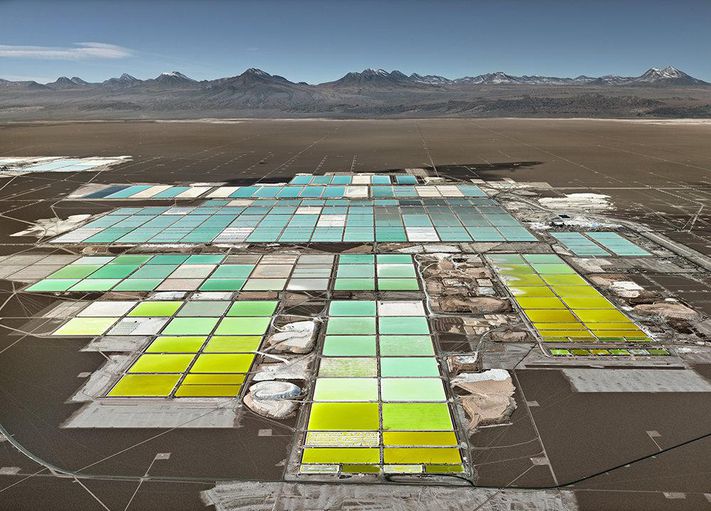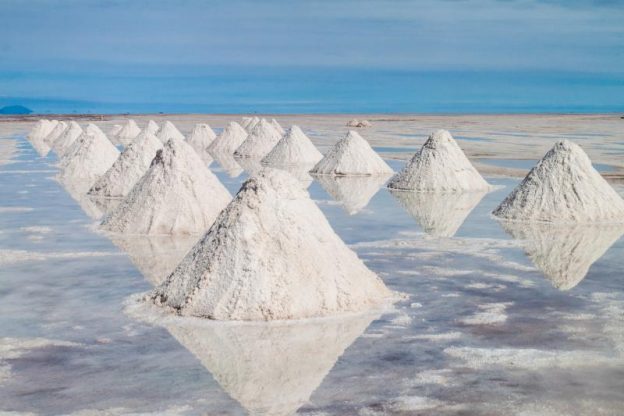Witness Post: Lithium
Bill Gates in his book How to Avoid a Climate Disaster wrote:
Despite all the limitations of lithium-ion batteries–the ones that power your laptop and mobile phone–it’s hard to improve on them. Inventors have studied all the metals we could use in batteries, and it seems unlikely that there are materials that will make for vastly better batteries than the one’s we’re already building. I think we can improve them by a factor of 3, but not by a factor of 50. [1]
Gates goes on to say that solid metal batteries may be found for grid-scale batteries to power whole cities and something called flow batteries, which involve storing fluids in separate tanks and then generating electricity by pumping the fluid together. However, until these new technologies are brought to scale (decades from now) we are stuck with Lithium as the current best mineral for batteries. Sometimes called “White Gold,” lithium is one of the lightest minerals on the periodic table.
It seems for the foreseeable future we have to hitch our clean energy hopes to Lithium. Some of the burning questions are where will all of the Lithium we need come from? And how will the mineral be converted to the most usable element for car batteries and electric grid storage containers? On first blush, the process is dirty and expensive. China, Argentina and Chile are major producers of the element and the US has a lot of the world potential mineral reserves, but the thought of mining it in open-pit mines seems far from GREEN. Today 93% of the US lithium comes from South America, and the State Department wants the US to ramp up it’s lithium security by producing most of it in the States.
The world is scrambling right now to replace fossil fuels (coal, oil, natural gas) with clean energy. The solar and wind industries are exploding, but they cannot scale fast enough. And there is the problem with storing the energy (take solar for example) which is great when you can inject the energy directly into the grid (during the day), but it is nearly impossible to store that energy and use it efficiently at night. Thus the search for a battery to tide over the gaps between energy generation and energy use. Lithium seems like the perfect antidote, if there were only able to extract the mineral cleanly. The environmental impact of finding all the lithium required to enable that transformation could become a serious issue in its own right. Christina Valimaki, an analyst with Elsevier, says, “One of the biggest environmental problems caused by our endless hunger for the latest and smartest devices is a growing mineral crisis, particularly those needed to make our batteries.” Valimaki advises looking at the entire chain of costs to the earth of batteries, noting that when taken as a whole, the carbon footprint of the product, the transportation and the packaging add up quickly. [2]
One of the issues that comes up with all lithium extraction processes lies with the mineral itself: Lithium is a highly reactive alkali metal that can easily pollute the ponds and streams near where it is mined and collected. Stories of dead animals and fish are all over the internet from the largest Lithium producer, BYD.
But we need to have the lithium, right?
Exactly how much Lithium we need is a matter of debate. Looking as the demand side of the equation it appears to be increasing exponentially. The price of the mineral doubled between 2016 and 2018. And according to consultancy Cairn Energy Research Advisors, the lithium ion industry was predicted to grow eight-fold from 100 gigawatt hours (GWh) of annual production in 2017, to almost 800 GWhs in 2027. [3]
The Oregon Lithium Connection
In a small town in southern Oregon, there is a water fountain that spouts a fizzy, odd-smelling elixir known as Lithia Water. The fountain, and soon to be commercialized resort and spa, earned it’s name because the natural spring water is infused with heavy traces of lithium oxide and saline from far below the earth’s surface. In other parts of the country (Buffalo, NY, Lithia Springs, GA) the libation has been touted as a health tonic since the 1880’s. The skeptical scientific community held out unto 1949 to acknowledge that there may be some wellness benefit of lithium salts in one’s diet.
In 1911, Ashland discovered it was situated next to the most lithium-loaded spring water other than New York’s Saratoga Springs, and set to work on building a world-class resort. Officials went as far as to pipe the spring water into town for the spa, but plans for the resort fell through as the health fad lost popularity. Instead, a multi-spouted drinking fountain was built and the land reserved for the spa was used as a public park near the center of town.
The city of Ashland installed the central city fountain in 1927. It was built from local granite and people came from far and near with their bottles and jugs to “fill a growler full” and consume it at home with their families. The city maintains lithia water fountain to this day, though it is more of a local oddity than a supposed health imperative with innumerable benefits. Today the lithium-oxide infused water is known for tasting terrible, and according to some, like rotten egg salad. [4]
Lithium Pills to Help Bipolar Disorders
In most depressive disorders, there is only one extreme mood: depression. However, people with bipolar disorder also experience a second extreme mood, called mania. Episodes of mania can be just as disruptive to your life as depression can be. To treat bipolar, it’s equally important that you treat depression and mania. Lithium is one of the oldest and most successful drugs used to treat the mania and depressive symptoms of bipolar disorder.
Lithium is a mood stabilizer. It comes in an extended-release tablet, immediate-release tablet, capsule, and an oral solution. It’s also fairly inexpensive because it’s available as a generic drug.
How does lithium treat bipolar disorder?
Lithium is a mood stabilizer used for long-term treatment of bipolar I disorder. Mood stabilizers are usually a first-line therapy for bipolar disorder. That means they’re the first drugs used for treatment. Lithium treats the manic episodes of bipolar I disorder, which is the more severe of the two types of this disorder. It helps decrease the intensity of manic episodes. It also makes depressive symptoms less severe. Exactly how lithium works to do this is not known, though.
Lithium is very effective. However, the amount of drug needed to be effective is close to the amount that can be poisonous to your body. Taking too much can cause lithium toxicity. Your doctor may slowly change your dosage when you start taking lithium to avoid lithium toxicity. It is very important that you take lithium exactly as your doctor prescribes it. Your doctor will also frequently monitor the levels of lithium in your blood.
Side effects of lithium
Some side effects are more common at standard dosages. Additional side effects are more common at higher dosages. These side effects are listed in the table below.
| Side effects at standard dosages (900–1,800 mg/day) | Additional side effects at higher dosages |
| • fine hand tremor • frequent urination • frequent thirst • nausea • diarrhea • vomiting • drowsiness • muscle weakness • lack of coordination | • giddiness • blurry vision • lack of muscle control during voluntary movements, such as walking and picking things up • ringing sound in your ears |
Rare but serious side effects
Lithium can cause serious side effects in certain people who have other conditions. It can also interact with certain drugs to cause serious side effects. These side effects are rare. Most people who take lithium do not experience them. If you’re concerned about the possibility of these side effects, talk to your doctor.
Lithium may decrease kidney function. If you already have kidney disease, there is a chance that taking lithium could lead to kidney failure. The level of this risk depends on how severe your kidney disease is. This kidney failure is also reversible when you and your doctor stop your treatment with lithium. Your doctor will likely assess your kidney function before prescribing lithium. Make sure your doctor has your complete medical history.
In rare instances, treatment with lithium has triggered Brugada syndrome in people who were predisposed to it. Brugada syndrome is the sudden rapid and uncoordinated opening and closing, or fluttering, of the ventricles of your heart. It is not known why the heart does this. The risk of sudden death from Brugada syndrome is very high. It is most common in men of Southeast Asian origin. If you take lithium and you experience the following symptoms, call 9-1-1:
- feeling lightheaded or like you will faint
- heart that feels like it is beating abnormally
- feeling short of breath
In rare cases, people who have taken lithium with other drugs for treating psychiatric disorders have developed brain disease. It is important to discuss with your doctor all the medications that you take as well as over-the-counter drugs and any herbal or vitamin supplements you take. This will help your doctor avoid harmful interactions. Symptoms of brain disease can include weakness, fatigue, fever, confusion, and tremors. If you have these symptoms, call your doctor right away. [5]
Mining Lithium
Open-Pit mining of Lithium has some obvious drawbacks: it is expensive, hard to extract, and tricky to refine for commercial purposes. Most of the world’s Lithium stockpile is currently sourced from hard rock mines, such as those in Australia, China and Argentina. Hard rock mining – where the mineral is extracted from open pit mines and then roasted using fossil fuels – leaves scars in the landscape, requires a large amount of water, and releases 15 tons of CO2 for every ton of extracted lithium.
The yield from mining the rocks is much lower than the process of brine extracting of the mineral. For that process, though you need huge salt flats and lots of water from underground reservoirs.
In South America there is a trio of countries that hold about half of the world’s supply of lithium. Covering large swaths of Argentina, Bolivia and Chile are the salt flats that have been dubbed “The Lithium Triangle.”
If you have ever been to the Bonneville salt flats in Nevada, or seen them during car racing land-speed records, you know that these types of areas are also some of the driest and most arid places on earth.
How Do You Extract Lithium from Salt Flats?
When geologist and miners find an area for Lithium extraction, they start by drilling a hole in the salt flats. Next they pump millions of gallons of water under the flats to push to the surface a salty, mineral-rich brine. They use approximately 500,000 gallons of water per ton of lithium, which in many areas is over half of the region’s water supply. Then the miners leave the flats for months at a time, expecting them to evaporate. The slurry first creates a mixture of manganese, potassium, borax and lithium salts which is then filtered and placed into another evaporation pool, and so on for many months. Between 12 and 18 months later, the mixture has been filtered enough that lithium carbonate can be extracted. [6]
Despite the perceived benefits of lithium oxide infused water, when brine-slurry mining the mineral, the waste water is complicated. If the waste water gets into the regions aquafers, reservoirs and other water supplies, the toxic chemicals including hydrochloric acid, potassium chloride, magnesium chloride, and calcium hydroxide, which are used in the processing of lithium into a form that can be commercialized, create havoc with the water systems for years. In Nevada, for example, researchers found negative impacts on fish and drinking water as far as 150 miles downstream from a lithium processing operation.
Another concern that has had some news coverage is the flammable nature of lithium batteries. A myriad of car crashes with EV vehicles and the ensuing fires is rampant. And there have been multiple manufacturing plants and battery recycling facilities around the world that have experience catastrophic fires, pointing to the hazardous nature of the lithium compound. Newer techniques of manufacturing have not greatly improved the results, though the chemists have figured out that for best results dousing a lithium-ion fire, use a foam extinguisher, CO2, ABC dry chemical, powdered graphite, copper powder, or soda (sodium carbonate) as you would extinguish other combustible fires. [7]
One artifact that Bill Gates left out of his book, is the company that his Breakthrough Energy Ventures backed called Lilac Solutions. The new mining techniques extract dissolved lithium directly form the salty brines below the surface, which is home to about 75% of the mineral. Lilac Solutions engineers have developed a reusable ion-exchange bead that can pull out up to 90% of the lithium in the brine and the beads leaves behind the unwanted minerals and chemicals, so harmful in the waste water. Apparently the remaining water can then be injected back into the original reservoir from which it was pumped.
The Lilac Solutions process is now being deployed at lithium mines around the world, and may debut in the US around California’s Salton Sea, a geothermal energy hotbed. The water issue may be solved sooner than later, which is good, if it is tested and proven successful on large scale projects. [8]
We need Lithium batteries to work, proving it’s moniker as the new precious metal or “White Gold.” The trick will be for the United States to remain lithium independent of China as we source these and other rare minerals so important to both our energy and carbon-neutral future.
==================================
[1] Gates, Bill, How to Avoid a Climate Disaster: The Solutions We Have and the Breakthroughs We Need, Alfred A. Knopf, New York, 2021 (page 92).
Other metals that are being used in batteries to lesser success include cobalt and nickel.
[2] https://www.wired.co.uk/article/lithium-batteries-environment-impact
[3] lithium batteries-environment-impact
[4] https://www.atlasobscura.com/places/lithia-water-fountain
[5] https://www.healthline.com/health/bipolar-disorder/lithium-use-bipolar
[6] https://www.wired.co.uk/article/lithium-batteries-environment-impact
[7] https://www.thecompliancecenter.com/lithium-battery-catches-fire/
[8] https://qz.com/1975325/electric-cars-are-fueling-the-uss-lithium-mining-boom/







